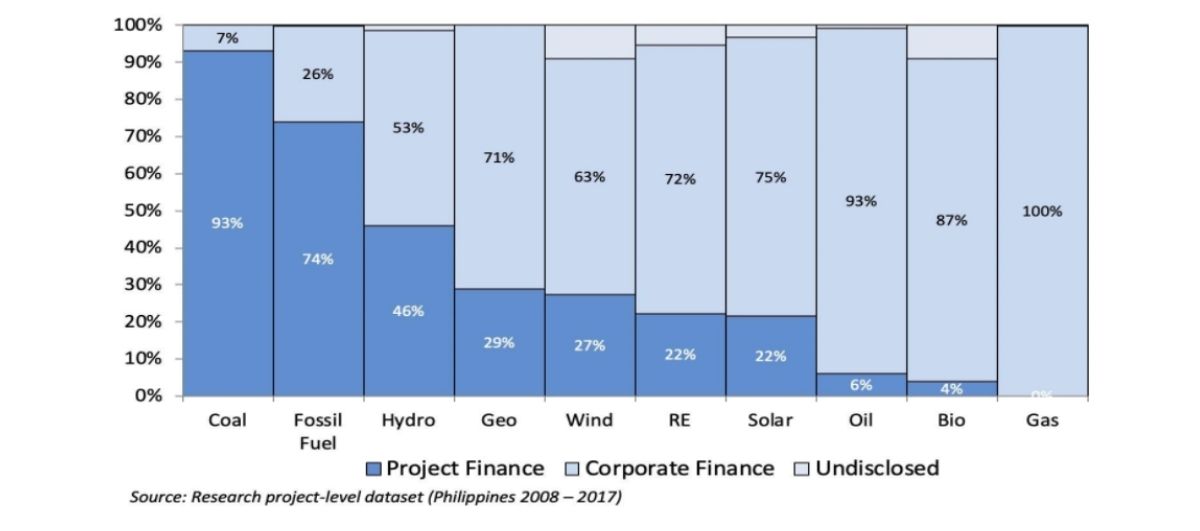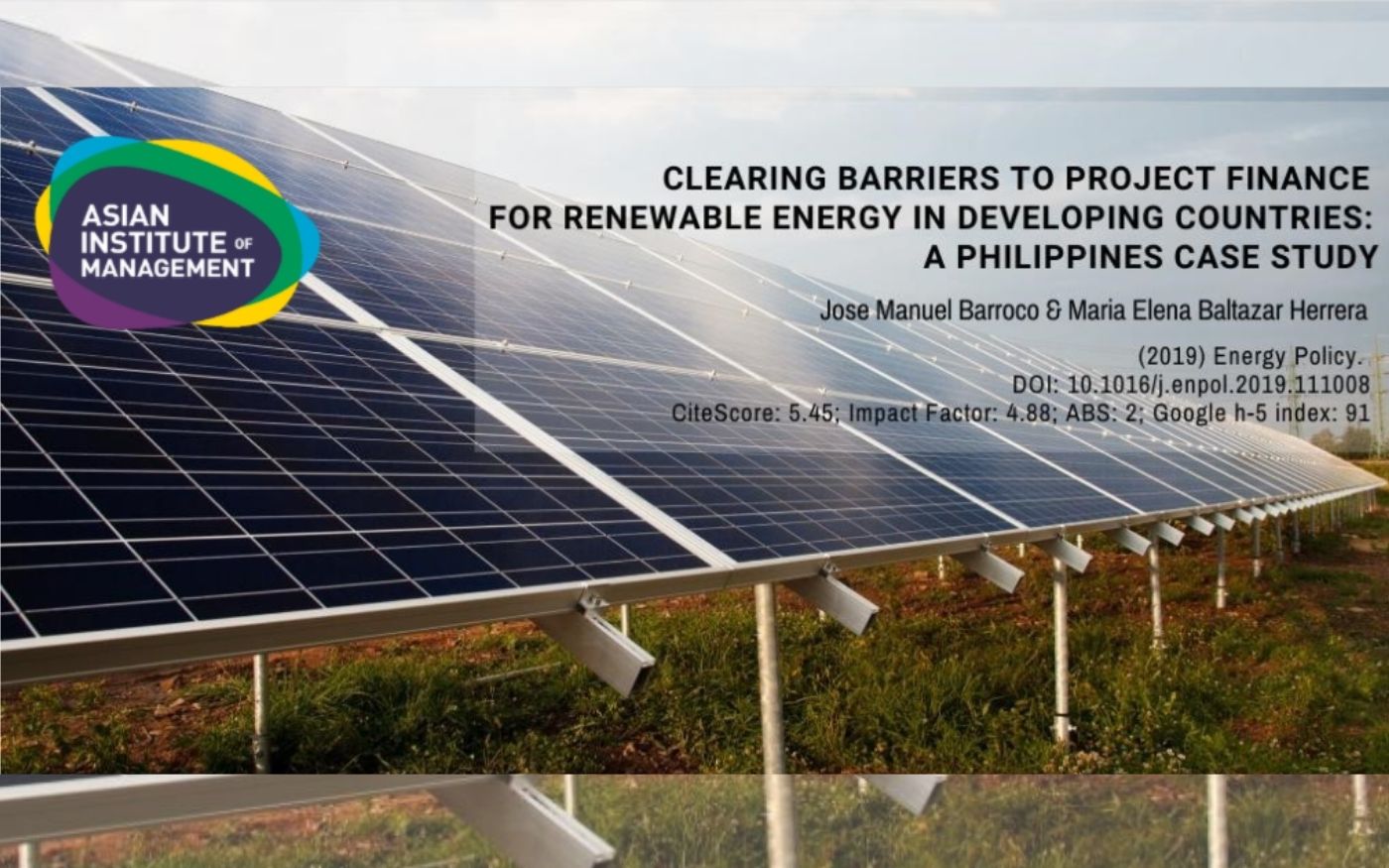Research by: Jose Manuel Barroco and Maria Elena Baltazar Herrera
Executive Summary
Developing countries must finance rapid growth with limited financial resources and without the mature capital markets, access to foreign capital, institutional capacity, and corporate governance of more developed countries. This challenge is compounded for renewable energy (RE) projects given their resource availability uncertainty, intermittency, long development cycles and typically smaller project sizes.
Project finance (PF) can unlock much needed capital for RE projects in developing countries. Under corporate finance (CF), the traditional financing method for infrastructure project, the parent company provides the capital directly to the project or indirectly by providing credit support. PF, on the other hand, expands funding by raising capital exclusively against project assets, mainly future cash flows. PF also enhances project risk management and transparency, and can drive economic growth in developing countries.
This paper examines factors driving the financing method choice between PF and CF in the power sector in the Philippines over the decade following enactment of the Philippine RE Law. A dataset containing 120 new power plants with detailed project-level data was created for this paper. One of the key PF drivers studied was the feed-in tariff (FIT), an above-market government-guaranteed fixed-rate per kilowatt-hour available to eligible RE projects. While there are many studies on how the FIT impacts RE investment in developed countries, the literature is much scarcer on how FIT impacts the financing method choice in developing countries.
After the RE Law was approved in 2008, RE capacity increased but RE share in energy mix decreased. FIT resulted in increased investments in RE, primarily in solar and wind.
Results show that PF incidence is higher for baseload, high-capacity utilization, non-intermittent technologies; non-FIT projects with revenue contracts; and larger projects owned by public companies. Contrary to expectation, PF was less utilized for FIT-eligible RE, and projects owned by private or small investors. PF was utilized primarily by well-capitalized investors, and mostly by power and financial companies. The figure below shows the percentage of capacity project financed or corporate financed per technology.

The table below summarizes the PF drivers, the research hypotheses and results.
| PF Driver | Hypothesis Description
|
Meets Research Results |
| Technology | Higher incidence of PF for baseload, non-intermittent technologies. | Yes |
| Revenue Source | High incidence of PF for non-FIT projects with revenue contract. | Yes |
| High incidence of PF for FIT projects especially solar and wind. | No | |
| Project Size | Lower incidence of PF for small projects. | Yes |
| Location | Lower incidence of PF in Mindanao. | No |
| Investor Core Business | High incidence of PF for developers and financial companies. Low incidence of PF for industrial and supplier companies. | No/Yes
Yes/No |
| Investor Ownership | Higher incidence of PF for private companies. | No |
| Investor Nationality | Lower incidence of PF for foreign companies. | Inconclusive |
The Philippine FIT was perceived as financially attractive but tight deadlines, low technology-specific capacity caps and the absence of project-size limits increased revenue uncertainty, resulting in high concentration of project ownership and potential erosion of public support. Smaller investors that typically are less well capitalized and could have relied on PF had uncertainty been lower, were not able to finance their projects or had to sell a majority stake of the project to larger investors. These smaller investors are critical to the deployment of RE for economic, social and political reasons. Moreover, widening the base of investors results in increased competition, which increases social welfare.
Policymakers can increase revenue certainty by (a) eliminating tight deadlines and avoiding low capacity caps; (b) defining a project-size limit to avoid crowding out by large projects which is especially important in the presence of FIT caps; (c) designing policies to increase the availability of long-term revenue contracts to energy investors by mandating distribution utilities and retail electricity suppliers to fully contract, not only their current demand, but also their future demand; (d) minimizing uncertainty in direct support policies (DSP) implementation by defining clear and strict guidelines and targets; (e) mobilizing public support by quantifying DSP benefits and displaying them in the consumer’s bills; and (f) tailoring DSP’s to small investors, such as developers and community organizations, to broaden investor participation and increase public support.
Given the intrinsic uncertainty of RE and developing countries, policymakers need to design policies to minimize revenue uncertainty, enable PF and broaden the investor base.
To cite this article: Barroco, J., & Herrera, M. (2019). Clearing barriers to project finance for renewable energy in developing countries: A Philippines case study. Energy Policy, 135, 111008.
To access this article: https://doi.org/10.1016/j.enpol.2019.111008
Publishing Journal
Energy Policy is an international peer-reviewed journal published by Elsevier since 1973 addressing the policy implications of energy supply and use from their economic, social, planning and environmental aspects.
CiteScore: 5.45; Impact Factor: 4.88; ABS: 2; Google h-5 index: 91





